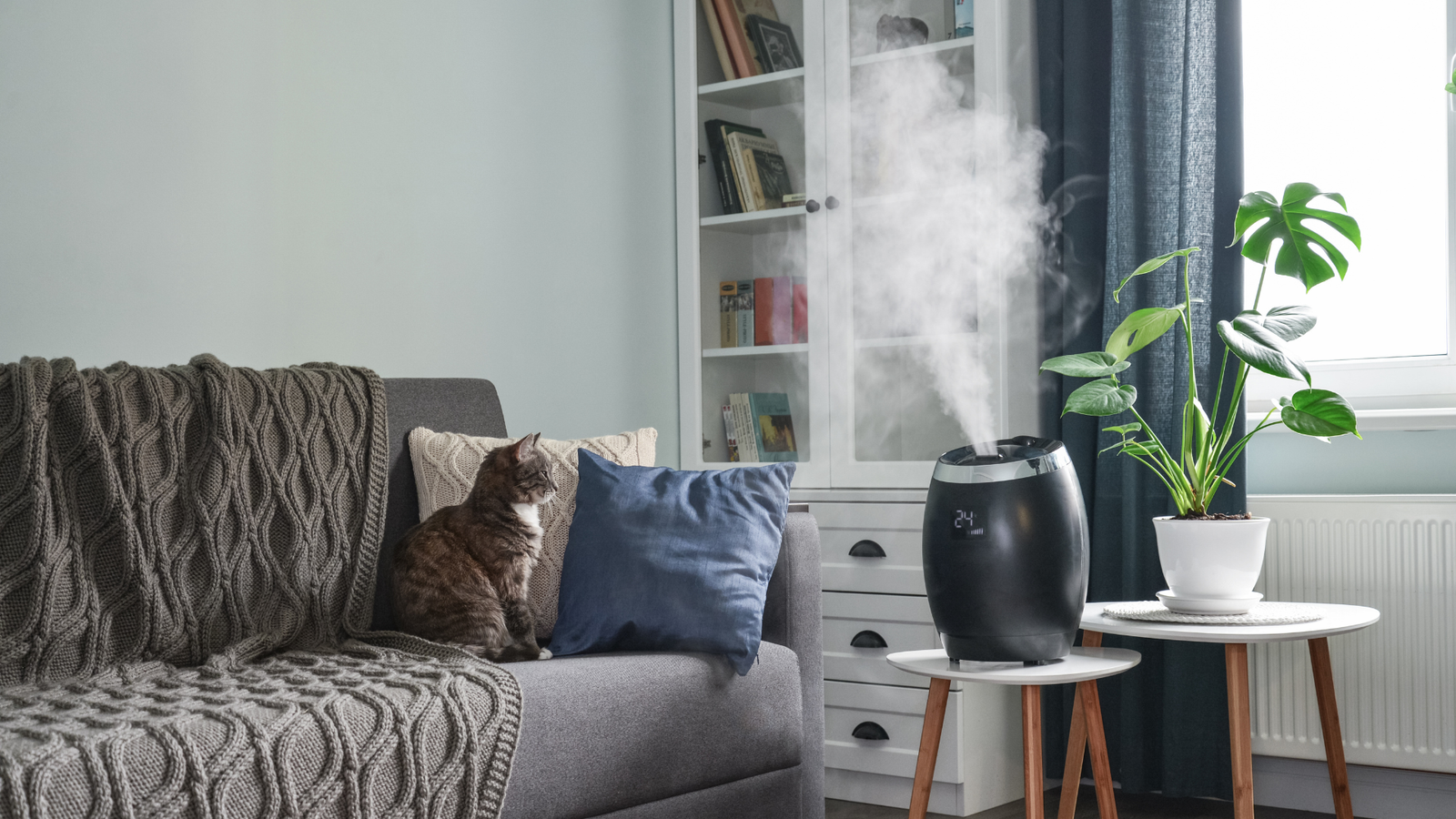In the dry months of winter, a humidifier is a godsend, infusing the air with moisture and doing its part to keep your skin and sinuses from getting parched. Since you’re probably regularly adding fresh water to it, you may not think you need to clean it that frequently. But you do—and more often than you might guess. In addition to helping it run better, cleaning your humidifier stops the machine from dispersing microorganisms and minerals into the air.
Practice proper humidifier maintenance
Distilled or demineralized water is better than tap water; the latter can contain minerals that could hasten bacteria growth. The minerals can also cause what looks like white dust to collect on furniture near the humidifier. That happened to me a lot last winter until I started using filtered water this year. (It’s annoying to have to wait for a full pitcher of water to filter, but not more annoying than having to clean around the humidifier constantly.) It’s also better not to be breathing those minerals in or allowing them to build up in the humidifier itself, and switching to distilled water will take care of that problem.
When the humidifier is not in use, don’t let water sit in it. If you run it overnight, dump out anything that wasn’t vaporized in the morning; you don’t want to be breathing in aerosolized stagnant water. Empty the water reservoir out, dry the inside with a cloth, and refill it again only when you’re ready to use it. If you forget to do that, don’t put new water on top of old water when you go to use it again. Dump it and fill with fresh water.
How (and how often) to clean your humidifier
The Mayo Clinic recommends you clean your humidifier every three days to keep it from spraying bacteria and fungi into the air. (Are you on a three-day schedule with yours? I wasn’t!) The Environmental Protection Agency advises cleaning yours by unplugging the machine and scrubbing it out with a brush to remove any scale, deposits, or film you can see on the sides or interior of the tank. If you haven’t cleaned yours in a while, you’ll likely see the deposits and gunk, so you’ll know where to scrub. Otherwise, use a sponge and thoroughly wipe down the entire perimeter of your basin.
For the next step, consult your manual to determine the products the manufacturer recommends you use to clean your machine. Most likely, it’ll be either distilled white vinegar or a 3% hydrogen peroxide solution. Some humidifiers can be cleaned with bleach, but not all, so make sure to follow the directions for your specific model.
Whatever you use, you won’t be running these cleaning products through the machine, but rather allowing them to sit in the water tank for 10 to 20 minutes before dumping it out and scrubbing it again. While that happens, scrub the other components with a little vinegar or hydrogen peroxide solution on a rag. Dump the solution from the basin, rinse it several times, then dry it with a cloth. Now you can breathe freely (and moistly) again.

Credit: Lindsey Ellefson
I just cleaned my mini humidifier and it’s easy: It’s just a matter of putting the vinegar or peroxide solution in there and leaving it alone after you wipe down the rest. Though each model will differ in its instructions, I added two parts water to one part vinegar to mine. I always make sure to dry mine well before using it again and I rinse it several times, since I don’t want any lingering vinegar scent.
This articles is written by : Nermeen Nabil Khear Abdelmalak
All rights reserved to : USAGOLDMIES . www.usagoldmines.com
You can Enjoy surfing our website categories and read more content in many fields you may like .
Why USAGoldMines ?
USAGoldMines is a comprehensive website offering the latest in financial, crypto, and technical news. With specialized sections for each category, it provides readers with up-to-date market insights, investment trends, and technological advancements, making it a valuable resource for investors and enthusiasts in the fast-paced financial world.
